Mazda is a Japanese car manufacturer that specializes in reliable, stylish vehicles. Established in 1920 as a tool manufacturer, the company (then named Toyo Cork Kogyo Co., Ltd.) moved into the vehicle business during the 30s with the introduction of their very first vehicle - the Mazda-Go.
The name "Mazda" was adopted as a brand for their vehicles starting with the Mazda-Go, but the company that makes these vehicles was not initially named after it. The company behind Mazda only adopted it as its official name in 1984.
Who Owns Mazda
Mazda Motor Corporation is not owned by any single entity. It is a publicly traded company, listed on the Tokyo Stock Exchange.
It is owned by many shareholders, the top stakeholders are:
- The Master Trust Bank of Japan: 15.4% stake
- Custody Bank of Japan Ltd.: 5.9% stake
- Toyota Motor Corporation: 5.1% stake
Ford Motor Company used to own a significant stake in Mazda, They had 24.5% in 1979 and increased it to 33.4% in 1995. Ford would eventually sell off its shares. Mazda currently operates as an independent company with its headquarters in Fuchū, Hiroshima, Japan.
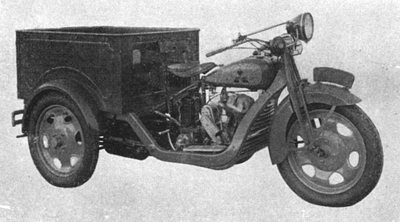 Mazda-Go: A Three-Wheeled Truck
Mazda-Go: A Three-Wheeled Truck
Mazda entered the automotive industry with a unique take on its first vehicle: a three-wheeled truck called Mazda-Go. The truck came with a handle-bar for steering, three gear transmission with reverse and powered by a single cylinder engine. After its introduction in 1931, various iterations and upgrades were introduced to the Mazda-Go until the vehicle's retirement in 1938, followed by a brief re-emergence in 1945.
Interestingly, Mazda's three-wheel vehicle was not only limited to the Mazda-Go especially during the post-war Japan. The emergence of "Kei" or lightweight vehicles also encouraged Mazda to release similar modes of transportation with a slight difference in design.
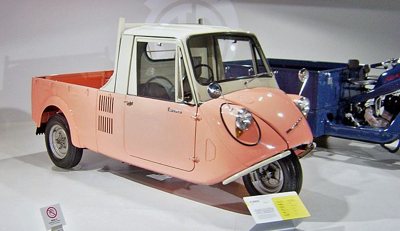 Mazda K360 - Post War Three Wheeled Truck
Mazda K360 - Post War Three Wheeled Truck
Mazda K360 replaced Mazda-Go as the company's three-wheeled truck for post-war Japan consumers. Built for light hauling and daily transport, it was powered by a 356cc, single-cylinder, four-stroke engine with a top speed of 40mph. While not built for speed, it was more than sufficient for its purpose, especially for small business owners. It was also incredibly compact, only 51 inches wide and 117 inches long. Because of its design and engine, the vehicle was fuel-efficient and well-suited for smaller roads - a valuable feature for many Japanese who were still recovering during that period.
Mazda R100 - Introduction of Mazda and Rotary Engine to America
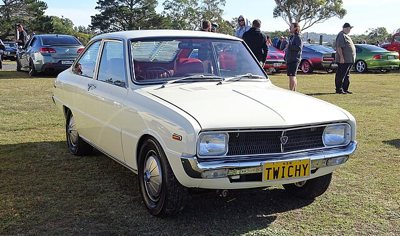 In the US, Mazda made its debut in 1970 with the R100. Aside from setting the stage on what Mazda could offer to their US customers, Mazda also introduced their unique engine design that would be used for many of its vehicles - the rotary engine. The R100 featured a 1.0L 10A Rotary engine, producing 100 horsepower and top speed of up to 100 mph. It was a compact car, measuring 155 inches in length and 59 inches in width.
In the US, Mazda made its debut in 1970 with the R100. Aside from setting the stage on what Mazda could offer to their US customers, Mazda also introduced their unique engine design that would be used for many of its vehicles - the rotary engine. The R100 featured a 1.0L 10A Rotary engine, producing 100 horsepower and top speed of up to 100 mph. It was a compact car, measuring 155 inches in length and 59 inches in width.
The use of the rotary engine was a success for Mazda because it made the vehicle lightweight and with higher RPM which improved control and acceleration. The design of the engine also made the engine easier to maintain. Unfortunately, the rotary engine was not as fuel-efficient compared to piston engines, it also had higher emissions and required more oil for maintenance. While the engine was popular during its time, the demand for more fuel efficient vehicles with less emission made the engine a challenge to integrate to modern vehicles.
Some of the most notable vehicles that featured the rotary engine were the RX-2, RX-3 and RX-7. The final Mazda vehicle that would use the engine was the RX-8 which ended its production in 2012. Rotary engines are now employed for limited use for hybrids as generators.
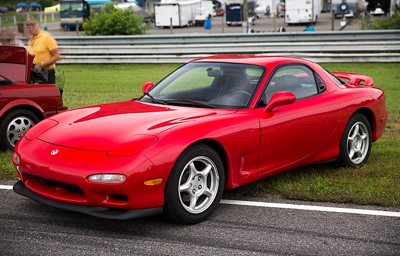 Mazda RX-7: Style and Power in One Package
Mazda RX-7: Style and Power in One Package
Aside from its rotary engine, Mazda is also known for its "KODO" design philosophy, which gives the car a minimalistic yet sleek look with sculpted portions that evoke the idea of constant motion—even when it is at a complete stop. The Mazda RX-7 is a perfect example of this design philosophy.
Introduced in 1978, this beautiful sports car was powered by a 1.3L Rotary engine that pushed the car up to 140 mph top speed. Depending on the version, the Mazda RX-7 was up to 175 inches in length and up to 68 inches in width. It was a lightweight vehicle with design that's still appreciated today even though the last version of RX-7 was released in 2002.
Mazda CX-5: Boosting Mazda through Compact SUV
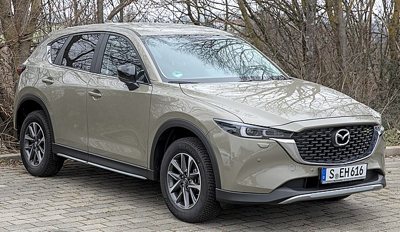 Mazda is well known for innovative engine and stylistic design of its vehicles. Mazda has also fared well with consumers with relatively impressive sales numbers through the years.
Mazda is well known for innovative engine and stylistic design of its vehicles. Mazda has also fared well with consumers with relatively impressive sales numbers through the years.
However, it was the Mazda CX-5 that boosted Mazda's success as it became its most successful model to date. Introduced in 2012 and currently in its 2nd generation, the CX-5 is a crossover SUV that introduced Mazda's own Skyactiv engine technology ensuring better fuel consumption and reliability.
The 1st generation of Mazda CX-5 came with two types of engines: 2.0L or 2.5L Skyactiv-G I4 with up to 125 mph top speed. It is 179 inches long and 72 inches wide.
The 2nd and current generation of Mazda CX-5 is a little longer (180 inches) with the same width. But the real upgrade is under the hood with the following engine options:
- 2.5L Skyactiv-G I4
- 2.5L Skyactiv-G Turbocharged I4
- 2.2L Skyactiv-D Turbo Diesel I4
Top speed for the 2nd generation is at 130 mph on their turbo models and their latest editions now come with AWD from 2022 with advanced safety features.
The Size Evolution of Mazda Cars
Mazda has adapted to market demands over the years to produce vehicle sizes in line with consumer needs.
Mazda-Go (1931): 117 inches long, 51 inches wide
Mazda RX-7 (1978-2002)
1st Generation: 168 inches long, 66 inches wide
3rd Generation: 175 inches long, 68 inches wide
Mazda CX-5 (2012-Present)
1st Generation: 179 inches long, 72 inches wide
Current Generation (2022): 180 inches long, 72 inches wide
Mazda CX-90 (2023): 199 inches long, 78 inches wide
Mazda MX-30 (2023): 173 inches long, 70 inches wide
Mazda CX-70 (2025): Estimated Dimensions: 190 inches long, 75 inches wide
Mazda CX-5 (2025, Third Generation): 180 inches long, 72 inches wide
Mazda's Future - Hybrids and the Return of Rotary Engine
Mazda is actively developing hybrid engines for its next generation of vehicles. Their legendary rotary engine has made a comeback in the Mazda MX-30, where it is used as a generator for hybrid vehicles. Aside from MX-30, the next generation of CX-5 will also feature Skyactiv-Z hybrid engines to improve fuel efficiency.
